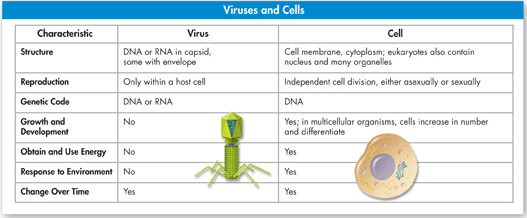
FIGURE 20–6 Comparing Viruses and Cells The differences between viruses and cells are listed in this chart. Form an Opinion Based on this information, would you classify viruses as living or nonliving? Explain.
dddViruses and Cells Viruses must infect living cells in order to grow and reproduce, taking advantage of the nutrients and cellular machinery of their hosts. This means that all viruses are parasites. Parasites depend entirely upon other living organisms for their existence, harming these organisms in the process.
Despite the fact that they are not alive, viruses have many of the characteristics of living things. After infecting living cells, viruses can reproduce, regulate gene expression, and even evolve. Some of the main differences between cells and viruses are summarized in Figure 20–6.
Although viruses are smaller and simpler than the smallest cells, it is unlikely that they were the first organisms. Because viruses are dependent upon living organisms, it seems more likely that viruses developed after living cells. In fact, the first viruses may have evolved from the genetic material of living cells. Viruses have continued to evolve, along with the cells they infect, for billions of years.
MYSTERY CLUE

When scientists injected extracts from BSE-infected cow brain tissue into mice, the mice developed BSE. The extracts induced BSE even when they contained no nucleic acids (RNA or DNA). Could a virus be the cause of BSE?
20.1 Assessment

-
Review What do viruses depend on for their reproduction?
Compare and Contrast How is viral reproduction different from that of cell-based organisms?
-
Review Describe each of the two paths viruses may follow once they have entered a cell.
Compare and Contrast How are lytic and lysogenic infections similar? How are they different?
Apply the Big idea
Compare the structure of a virus to the structure of both a prokaryotic cell and a eukaryotic cell. Use a graphic organizer of your choice to organize the information. You may wish to refer to Chapter 7, which discusses the structures of cells in detail.

Table of Contents
- Formulas and Equations
- Applying Formulas and Equations
- Mean, Median, and Mode
- Estimation
- Using Measurements in Calculations
- Effects of Measurement Errors
- Accuracy
- Precision
- Comparing Accuracy and Precision
- Significant Figures
- Calculating With Significant Figures
- Scientific Notation
- Calculating With Scientific Notation
- Dimensional Analysis
- Applying Dimensional Analysis




